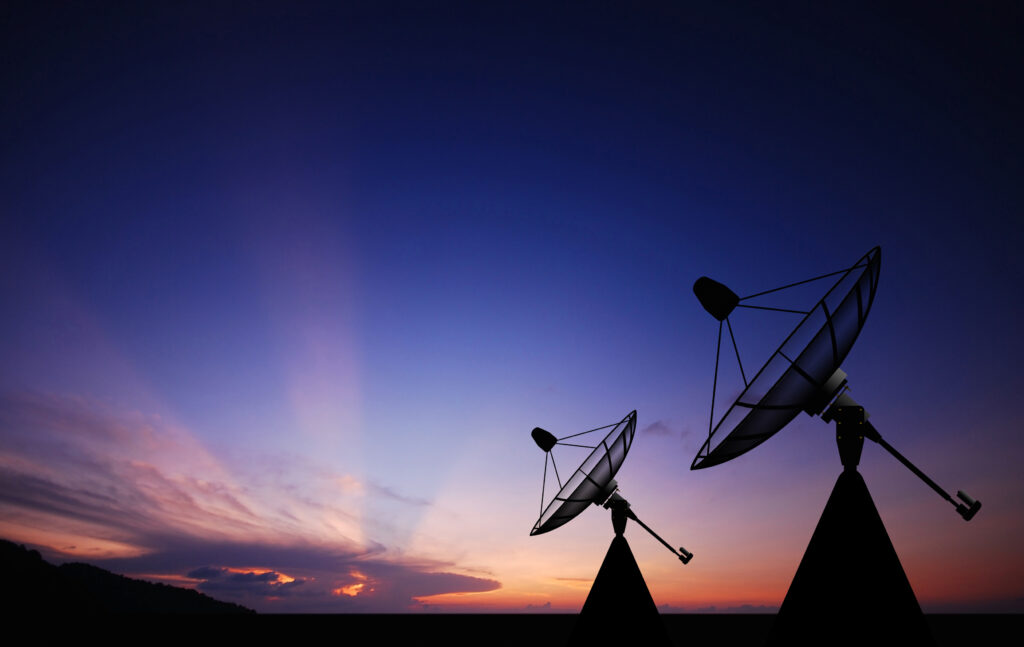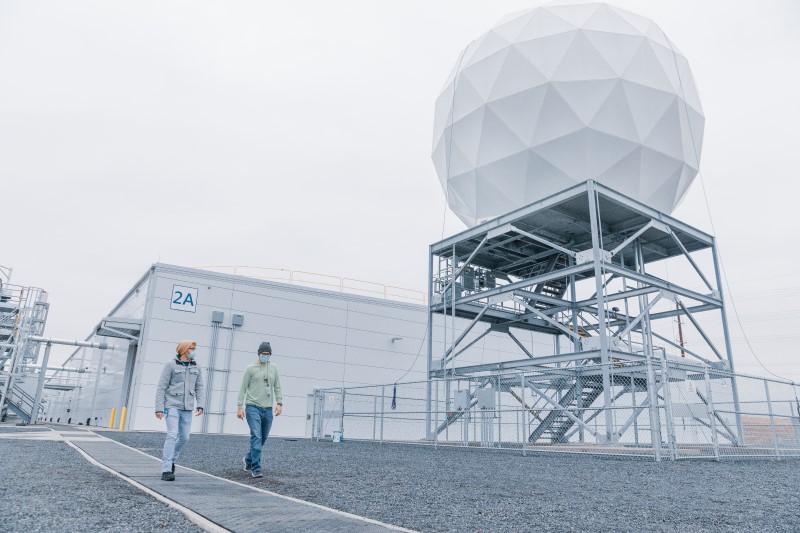Since launching Microsoft Azure Space, we’ve been focused on three main goals:
- Connect anyone, anywhere, at any security level, back to the full power and potential of the Microsoft Cloud. This includes working with exciting space start-ups like Muon Space and True Anomaly as well as government agencies like the United States Space Force.
- Enable real-time analysis across petabytes of data gathered on orbit, so that our customers can take immediate action that delivers on their mission.
- Empower developers to develop, deploy, and run their applications on orbit.

As customers and partners have adopted and experimented with the Azure Space portfolio, new and interesting use cases are emerging that illustrate what’s possible. Today, we are excited to share some of those customer stories, along with updates for Azure Orbital Ground Station, Azure Orbital’s software development kit, and Microsoft Planetary Computer. While it is still early days, these stories offer a glimpse at understanding how an accessible space layer can transform the way organizations across the public and private sectors serve their missions.
Satellite operators are using Azure Orbital Ground Station for spacecraft communications
Delivering space data to Earth requires a secure, robust ground network with low latency and high throughput—presenting various challenges for the operator. Opportunities for satellite contacts are limited by ground station coverage, and it can be difficult and expensive to achieve sufficient capacity.
Azure Space is enabling partner-powered, space-to-cloud transmissions with end-to-end support for space data downlink, processing, storage, analytics, and dissemination. Azure Orbital Ground Station provides easy, secure access to communication products and services required to support all phases of satellite missions—from launch to operations and decommissioning. Mission operations are seamless with self-service scheduling of contacts in Microsoft Azure with a managed data path.
Muon Space collaborates with Microsoft for its first two launches
As previously announced, Muon Space selected Microsoft to support its first-ever launch, using Azure Orbital Ground Station as the sole ground provider for their MuSat-1 mission. Muon Space is ramping up for the launch of its second satellite, MuSat-2, in early 2024—again leveraging Azure Orbital Ground Station to bring down data gathered by a prototype microwave sensor. Muon Space will provide weather and ionospheric data to the United States Air Force and Space Force.
“Launch and early operations is always a stressful period for satellite operators. With Azure Orbital, we achieved contact with MuSat-1 within six minutes of separation from the launch vehicle. This early success, along with our continuous on-orbit operations, gives us confidence to use Azure Orbital for future missions.”
Paige Holland-Thielen, Operations Automation Lead, Muon Space

Azure Orbital Ground Station for government customers
We’ve seen increasing momentum with commercial customers adopting Azure Orbital Ground Station. Azure Orbital Ground Station is now available in preview within the Microsoft Azure Government region. Introducing Azure Orbital Ground Station into Azure Government enables government customers to fully leverage a global partner ecosystem of ground stations, cloud modems, self-service scheduling, and a managed data path.
True Anomaly and Viasat are leveraging Azure Orbital Ground Station in Azure Government for space domain awareness
True Anomaly selected Microsoft and Viasat to provide ground support for its upcoming launch of two Jackal spacecrafts—autonomous orbital vehicles for rendezvous and proximity operations. True Anomaly will schedule satellite contacts at Viasat Real Time Earth (RTE) sites using Azure Orbital Ground Station in Azure Government.
“Azure Orbital Ground Station’s managed data path makes it easy to connect to a global ground network. With one click of a button on Azure, we gain access to all Viasat Real Time Earth sites and simply indicate where the data from our spacecraft should land, while Microsoft handles the orchestration and connectivity. Working within Azure Government lets us meet our customers where they are.”
Jared Kirkpatrick, Jackal Block 1 Project Manager, True Anomaly

Provisioning fiber to Viasat sites
To provide customers with their data as quickly and securely as possible, Microsoft is provisioning high-speed, real-time cloud connectivity to select Viasat RTE sites, allowing customers to stream multi-gigabit per second downlinks.
“Viasat is collaborating with Microsoft to enable low-touch access to space communication solutions for our customers like True Anomaly. Azure Orbital Ground Station offers a common data plane and API to access our global antenna network that includes very high throughput data downlinks over Ka-band.”
Aaron Hawkins, Real Time Earth Director for Strategic Partnerships, Viasat

Watch this video to learn more about how our customers are using Azure Orbital Ground Support in support of their missions.
Gaining insights from space data
As the volume and value of space data continues to grow, having easy and affordable access to ground infrastructure will play a central role in serving customers’ mission-critical operations. So too will be the ability of customers to access and analyze near real-time data gathered from space.
The future of the cloud will incorporate space solutions such as satellite connectivity and Earth observational data. Space-based sensors observing Earth and satellite data will increasingly be used to improve our data insights on the ground.
The latest episode in the Microsoft Future of the Cloud Webinar series explores the role of space data in creating “a planetary computer for a sustainable future.”
Watch the series to learn about:
- Leveraging the potential of the cloud and space to enable data-driven decision making for your organization and missions.
- How Microsoft Planetary Computer supports global efforts of environmental sustainability and Earth science by enabling developers to build tools for measuring, monitoring, modeling, and managing healthy ecosystems.
- The potential opportunities that a new Azure Space data solution built on the Microsoft Planetary Computer will create for Microsoft’s customers to unlock the full potential of their Earth observation data.
Empowering developers to build, deploy, and operate on-orbit
Empowering any developer to build and deploy applications into space will be critical to lowering the barrier to entry for participating in the space industry. Azure Orbital’s software development kit provides satellite operators with the tools and capabilities to unlock new business models and enable mission requirements.
Loft Orbital customer onboarding for virtual missions on YAM-6 is now open
Over the past two years, Microsoft and Loft Orbital have been collaborating to lower the barriers to entry for space. A key pillar in this collaboration has been the enablement of “virtual missions,” making it easier for developers to access space capabilities without having to develop or launch their own hardware in space, and instead by simply writing software applications.
YAM-6 is the first satellite fully dedicated to offering this capability. Last week, we announced that YAM-6 is now publicly accepting customers for virtual missions for 2024. General availability is planned for April 2024.
“Our joint product offering leverages Loft’s space infrastructure and Microsoft’s cloud and ground infrastructure to make it simple for anyone to deploy AI applications in space at scale. YAM-6 is supported by the Azure Orbital product portfolio, including Azure Orbital Ground Station, Azure Orbital space edge on-orbit application framework.”
Pierre Damien Vaujour, Cofounder and Chief Executive Officer, Loft Orbital

Space Compass leveraging virtual missions to prove out concepts quickly
Space Compass—a joint venture company between NTT, Japanese Information and Communications Technology (ICT) leader, and SKY Perfect JSAT Corporation, Asia’s largest satellite operator—is on a multi-year mission to deploy space-edge computing capabilities together with an ultra-speed optical data relay network. This will allow space data users to utilize real-time data much more efficiently in the cloud environment (see Figure 1).
Over the past three months, Space Compass has been working with Microsoft to explore use cases in an effort to better understand and demonstrate the value of on-orbit processing, and how to shape their future space infrastructure to support it.
“We are very excited to closely collaborate with the Microsoft team to develop a cutting-edge space computing solution. This is one of our key initiatives to realize the Space Integrated Computing Network.”
Shigehiro Hori, Co-Chief Executive Officer, Space Compass

Space Compass will be running a virtual mission on YAM-6 to demonstrate AI-based ship detection. This demonstration paves the way and de-risks future missions that will be flown on Space Compasses’ own satellites. Learn more about the Space Compass mission.

Both Microsoft and Space Compass believe in the power of on-orbit processing, bringing AI to the edge in space with high-speed connectivity to the cloud.
Learn More
These exciting use cases are just the beginning. Learn more about the ways that Microsoft Azure Space can transform how you deliver on your mission:
- Sign up for news and updates on how Azure Space data can advance your organization and missions, or complete this form to get in touch with the Azure Space team.
- Visit the Azure Orbital Ground Station website and documentation page.


